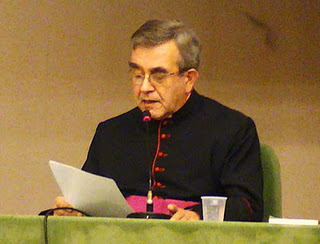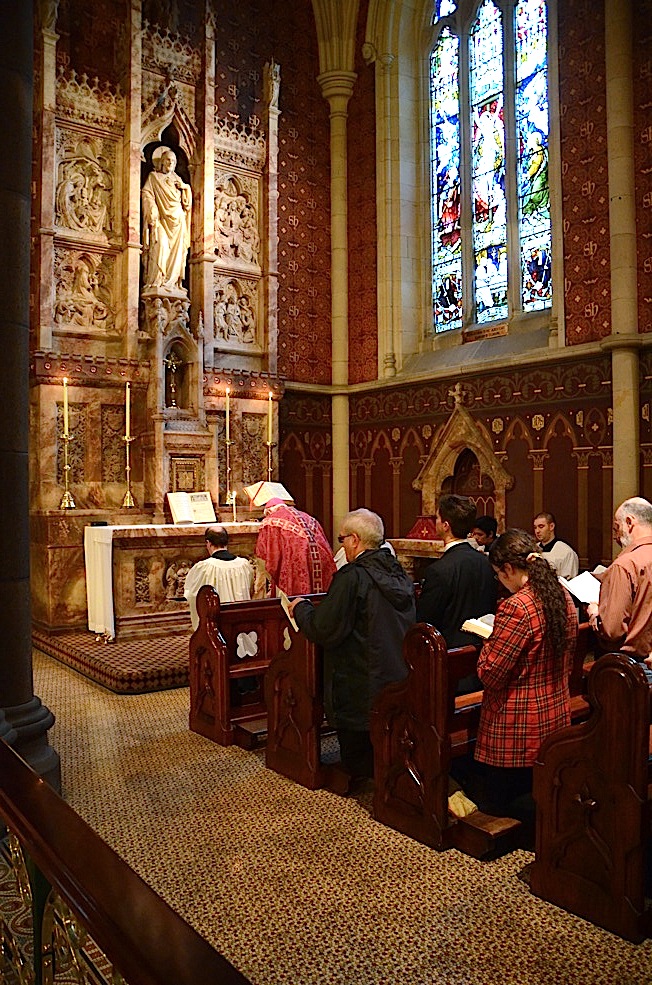Under Una Voces generalfrorsamking i Roma i noevember i år ble det holdt flere foredrag, som nå offentliggjøres på NML-bloggen. Det andre av disse foredragene jeg vil nevne er Don Giuseppe Vallauris gjennomgang av prestens stille ønner i messen. Han tar ikke her opp Canon som tradisjonelt sies stille, men de mange stille bønner som presten sier gjennom hele messen. Han sier om disse bl.a.:
… The priest at Mass acts “in persona Christi capitis”, he embodies, he represents Christ and therefore, all his actions, even the most insignificant ones, like climbing the steps, have a meaning, a sacred meaning. These prayers are not as ancient as the Roman Canon, and it can easily be surmised that in the course of time the priest and or the Church felt the need to fill in the gaps, so to speak, and be reminded of his unique role, at every moment of the Mass. …
… The first characteristic of these prayers is humility. It is a recurring idea throughout the Mass, from the prayers at the foot of the altar to the last, inaudible prayer, Placeat tibi, Sancta Trinitas. …
… I said above, that the priest at Mass, but not only at Mass of course, acts in “persona Christi” and precisely for this reason he feels unworthy. It is as if he constantly needed to remind himself of his unworthiness for such a sublime role. A similar attitude is expressed by the kissing of the altar, which he does several times. Not only at the beginning, before the Introit, and twice during the Canon, but also every time he turns towards the people, he kisses the altar beforehand. Each time, he wants to be united with Christ, represented by the altar, he needs to be empowered by Christ himself, so that he can really re-present Him.
The first silent prayer, after the prayers at the foot of the altar, which, in the solemn Mass at least, are said by the sacred ministers alone, is Aufer a nobis. This is one of the most beautiful moments. The priest approaches the altar, the place of sacrifice and, realizing he is unworthy of such a task, prays that he may be purified. Humility leads to the request for purification. The altar already is the Holy of Holies, having been consecrated, set aside for the offering of the sacrifice. Who could approach it without fear? He prays Aufer a nobis, using the plural, because he prays in the name of the sacred ministers. As Dom Gueranger says: “The closer we are to God, the more we feel that even the slightest blemish on the soul is an obstacle to be removed. Already he has prayed: Deus, tu conversus, vivificabis nos. But since he is getting near to God, he asks again that his sins may be removed. …
… The silent prayers of the priest at Mass, open for him a true sense of awe and amazement as he performs his holy duty. “This amazement should always fill the Church assembled for the celebration of the Eucharist. But in a special way it should fill the minister of the Eucharist.” (Ecclesia de Eucharistia, 5).
Alle disse stille bønnene finner man her – på latin og norsk.


 NLM skriver mer om Una Voces 20. generalforsamling i Roma i november,
NLM skriver mer om Una Voces 20. generalforsamling i Roma i november, 